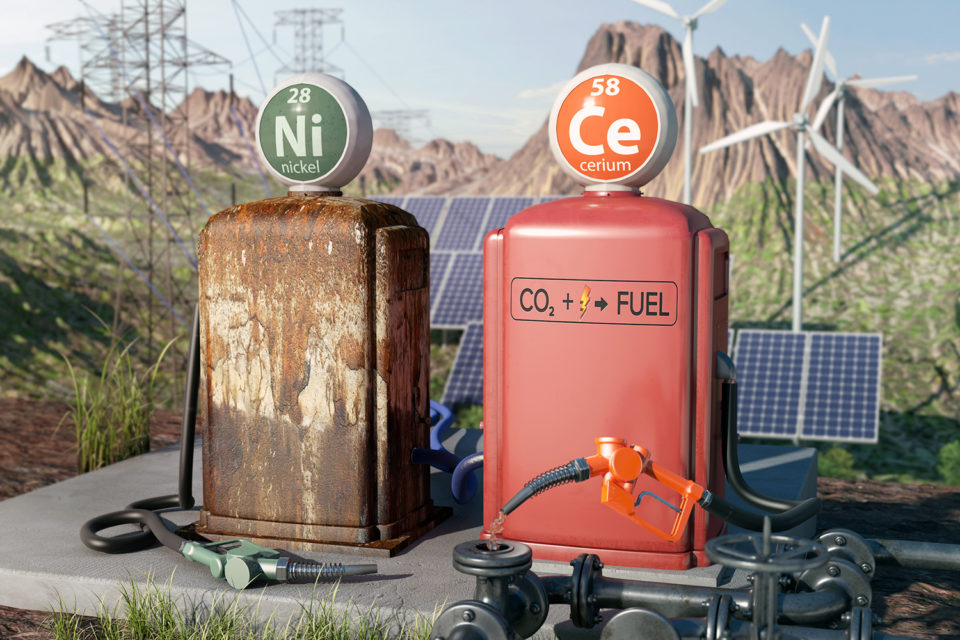Key challenges in the transition to sustainable energy include the long-duration storage of cheap, renewable electricity and the electrification of the heavy-freight transportation sector. Both challenges can be met using electrochemical cells. Solid oxide electrolysis cells are capable of highly efficient splitting of steam and CO2 to produce a synthetic H2–CO gas mixture (syngas), which can be converted into synthetic hydrocarbon transportation fuels using conventional industrial reactors. However, the efficiency of the process is limited by the risk of destructive carbon deposition inside the cells’ porous solid electrodes. A nickel catalyst is responsible for the carbon growth, but replacing this long-standing conventional catalyst has turned out to be highly challenging.
Now, researchers have used ambient-pressure x-ray photoelectron spectroscopy (APXPS) at ALS Beamlines 9.3.2 and 11.0.2 to probe the mechanisms by which carbon grows on different catalysts during CO2 electrolysis. Gadolinium-doped cerium oxide (GDC) is known to resist carbon growth, and the ambient-pressure experiments probed the degree and mechanism of this carbon resistance. The experimental data, subsequently confirmed by density functional theory calculations, revealed that the carbon atoms are energetically trapped by various oxygen species on the surface of GDC—a capability entirely lacking for nickel.
The first step toward turning this discovery into a real-world application was made by building and testing a full-scale solid oxide electrolysis cell employing the more carbon-tolerant ceria catalyst. The test showed selective CO production without carbon deposition at a much higher yield than possible with nickel cells. The discovery is likely to have far-reaching consequences for the practical utilization of electrochemical devices for producing sustainable hydrocarbons for transportation and for the chemical industry.

T.L. Skafte, Z. Guan, M.L. Machala, C.B. Gopal, M. Monti, L. Martinez, E. Stamate, S. Sanna, J.A. Garrido Torres, E.J. Crumlin, M. Gárcia-Melchor, M. Bajdich, W.C. Chueh, and C. Graves, “Selective high-temperature CO2 electrolysis enabled by oxidized carbon intermediates,” Nat. Energy 4, 846 (2019), doi:10.1038/s41560-019-0457-4.